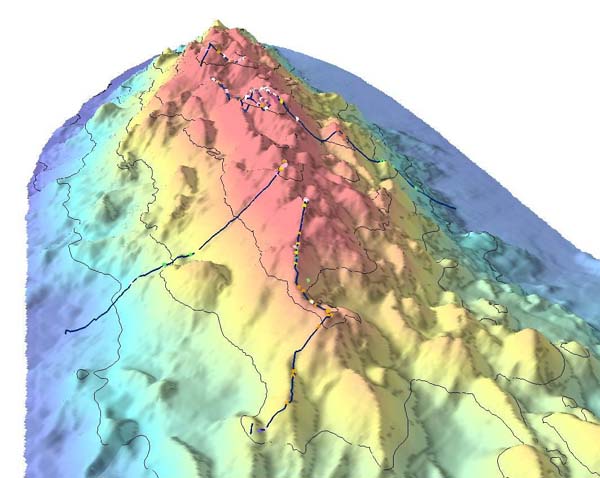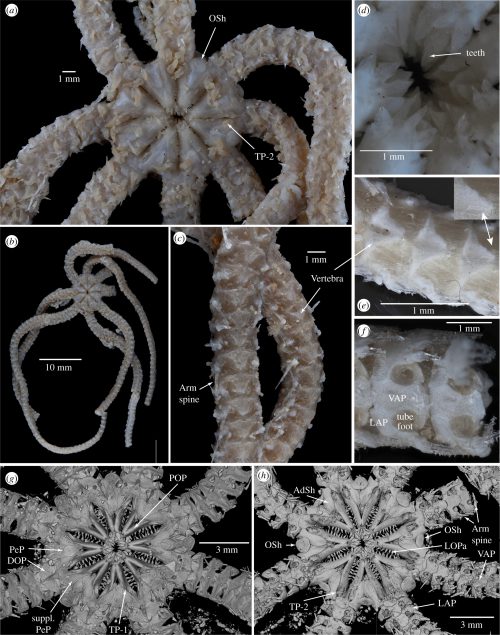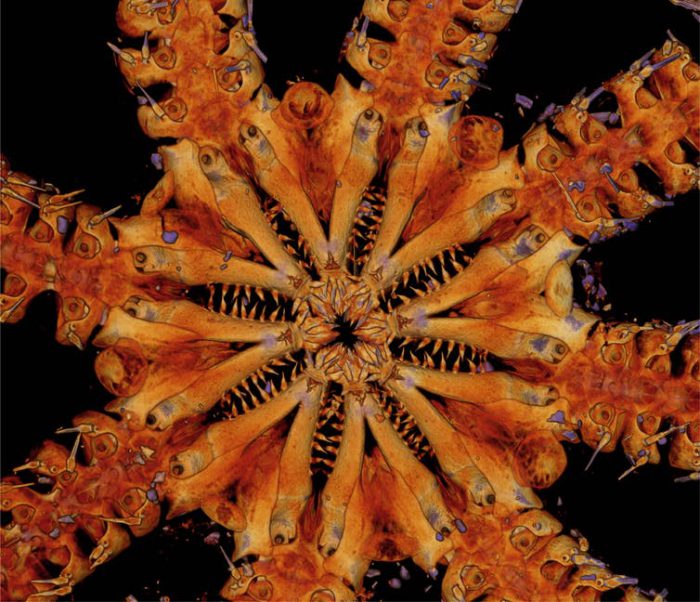A brand new discovery in the deep oceans is reminding us of just how little we know about what is living down there. It's name is Ophiojura (say oh-FEE-oh-juh-rah) and it is a type of brittle star. These are sea star cousins that are known for their arms, which are extremely long and thin compared to the centre of their bodies. But in this case, Ophiojura has an extra feature about it that makes its unique even among other brittle stars.
Its midsection is made up of eight pairs of very toothy jaws. And not much else. And unlike most other sea stars (including other brittle stars), there's no top or bottom to this middle. No underside area where the jaws and mouth is found. It's the same on both sides, making it a maximum toothy terror!
Yikes!
So naturally, the question becomes: What is this creature all about and where was it hiding?
That sounds like a lot of fun to answer. Let's try it right now?
Ancient pockets of life

Seamounts are undersea mountains that can contain unique pockets of life. (Wikimedia Commons)
Ophiojura was first found back in 2011 while researchers trawled (or dragged a net across an area) on a seamount called Banc Durand in the southwest Pacific Ocean. (A seamount is a submerged mountain, often a volcano.) The top of Banc Durand is about 500 metres (1,600 feet) below sea level. This is a very dark area, right on the edge of the deepest regions of the ocean. And after this brittle star was found, the surprises just kept coming.
The biggest one? This species is really old.
During the last decade, scientists have conducted DNA tests on Ophiojura and found that it is separated from other brittle star species by about 180 million years of evolution. Whoa! That's going back to the early Jurassic Period, a.k.a. the beginning of the golden era of dinosaurs. What is this creature doing here?
Little corner of the world

Many different details of the Ophiolura brittle star. Maybe it survived unchanged this long because no one wanted to risk bothering it? (University of Melbourne)
According to an article written by Tim O'Hara of Museums Victoria in Australia, creatures like Ophiojura simply have found a quiet, remote part of the world to remain unchanged. O'Hara was one of the scientists who prepared a new study on this brittle star. He says that in addition to the DNA tests, this creature looks remarkably similar to fossils found in Jurassic era rocks in northern France.
Usually, we call animals like this 'living fossils'. The coelacanth is a famous example of this—this fish was only known through 68 million-year-old fossils, until a fisherman caught one in 1938. But O'Hara doesn't like this term because it suggests that these animals haven't changed at all in many millions of years. Instead he has a different term: 'paleo-endemics'.
So, we have to admit that living fossil is way catchier. But O'Hara is the scientist, and we like what he's getting at. An endemic species is one that is found in a particular area or region. And paleo means old, or ancient. To O'Hara, paleo-endemics are animals that were once widespread across the planet, but that now live only in very particular spots on the planet. Somehow, they've managed to remain almost unchanged for many, many millions of years.
Just think of how different the world was back then! Can you imagine what other paleo-endemics are hiding down in the deep sea?
 Uhhh, say cheese? That's a lot of teeth! (J. Black/University of Melbourne)
Uhhh, say cheese? That's a lot of teeth! (J. Black/University of Melbourne)









